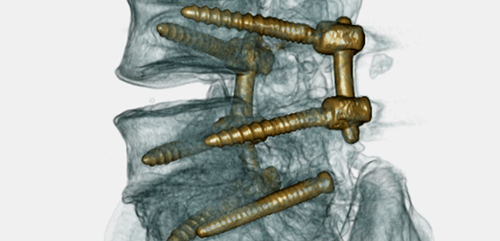This study was published in SPINE, Volume 42 – Issue 9 on May 1st, 2017.
In 2012, a study from Utah State University, in collaboration with the Workers Compensation Fund of Utah (WCFU), evaluated several biological, social, and, psychological outcomes among 245 injured workers undergoing lumbar fusion. Evaluated factors included: quality of life, patient satisfaction, and disability.
Another important purpose of the study was to evaluate how outcomes have changed since the advent of new spine surgical fusion technology.
Specific findings from the study:
- 29% participants indicate total disability after the lumbar fusion surgery
- 41% indicated back/leg pain after the lumbar fusion surgery was worse than expected and 23% indicated back/leg pain is no worse or better than prior to surgery (aka the same)
- 51% indicated their current back pain was somewhat or much worse than they expected
- 36% indicated their quality of life was a little, moderately or much worse than prior to surgery
- 57% of responders met criteria for poor outcome when the Roland-Morris Disability Questionnaire (RDQ) was used to measure levels of back specific functional impairment
- 37% indicated severe restrictions in terms of physical limitations after the lumbar fusion surgery
- 50% indicated occasional or regular use of narcotic analgesics after the lumbar fusion surgery
Findings show that over the past decade, overall fusion rates have increased significantly. However, despite enhanced fusion rates, injured workers who have undergone lumbar fusion in Utah demonstrated somewhat worse outcomes than those documented a decade ago.
Specifically, the present study demonstrated significant increases in disability rates and reported decreases in functional capacity and poor quality of life. While these findings do not support the position that compensated workers cannot benefit from lumbar fusion, they do highlight the importance of medical providers and surgeons to use more discretion when recommending lumbar fusion as a treatment option for injured workers.
Find more information about the Roland-Morris Disability Questionnaire (RDQ) here: http://www.rmdq.org/.
If you would like to read more about fusion studies, feel free to read more here: https://www.bonati.com/blog/case-against-fusion-1/, https://www.bonati.com/blog/case-fusion-2/, https://www.bonati.com/blog/case-fusion-3/.
If you’re seeking treatment for chronic neck or back pain and have been recommended a fusion, allow our surgeons to review your case before making any final decisions. The patented Bonati Spine Procedures are a proven alternative to fusions, having performed 70,000 procedures with a 98.75% patient satisfaction rating. To get your review process started, complete our MRI review form.

